Tipu Sultan and Haidar Ali, an inspiration for America’s founding fathers, revolutionaries, and Confederate Congress
Research and author: Ameen Ahmed
The Second Continental Congress of USA representing thirteen British colonies in North America declared independence from Great Britain on 4th July 1776 (ref. 1). As Britain tried to subjugate the fledgling country, the latter looked up to Britain’s enemies to draw inspiration in its own struggle. Thus, the Americans took a keen interest in Britain’s conflict with Mysore Kingdom many thousand miles away. Americans readily found support from France which was keen to get back at Britain for their defeat in the Seven Years’ War of 1754-63 (ref. 2). Many other European powers allied with either English or French in what turned out to be a conflict that was fought across each others’ colonies spanning much of the globe.
George Washington, Benjamin Franklin, John Adams, Thomas Jefferson, Alexander Hamilton, and James Madison are among the most important figures that helped form USA and shape its destiny in infancy. These are its founding fathers. In 2010, the National Archives collaborated with University of Virginia to host historical documents related to Founders of USA on a website (ref. 3). The correspondence and intelligence gathering of America’s founding fathers, which can be found on this website, reveal they not only keenly monitored British affairs across the globe but also desired Britain lose to her enemies, particularly in India where it arguably faced its stiffest military and political challenge.
There are numerous letters that name Mysore Kings Haidar Ali and Tipu Sultan or refer to the fate of the British in India during their rule, particularly their many battles with this global power. I am selecting a few to help you understand the impact these two men had on America’s path towards its freedom from British.
The earliest formal introduction of an Indian ruler to America’s founding fathers seems to be a letter in French to Benjamin Franklin by Comte de Tressan, Lt. Gen of the Armies of France. In one of his many letters to Franklin, he wrote from Paris on 24th June 1777 about a European who served Haidar Ali (ref. 4). Comte de Tressan, called Haidar a `brave Moghul Prince’ and offered to put the US Congress `into an intimate correspondence’ with a European who was working for Haidar. Haidar Ali was known to have Europeans on his payroll (ref. 5).
The Second Anglo Mysore War was followed keenly by American revolutionaries. John Adams in his letter to the President of Congress, on 10th June 1780, provided US Congress with details of the movement of British Admiral Hughes’ squadron and referred to Haidar Ali as ‘the famous Hyder Aly’. The letter was read out to the second Continental Congress of US on 25th September 1780 (ref. 6). Adams was America’s first Vice President under George Washington and succeeded the later as the nation’s second President in 1797 (ref. 7).
Through 1781, revolutionaries continued to correspond on the Anglo-Mysore conflict. They hoped and wished for England’s defeat. Edmund Jennings Randolph wrote a detailed account of Haidar’s campaign to John Adams on 4th April 1781 from Brussels. He mentioned the receipt of a London based newspaper that included information about Haidar Ali’s army of eighty thousand horses and his siege of Arcot. It narrated the rout of Col. Baillie and Col. Fletcher, together with the loss of four hundred Europeans and four thousand Indian sepoys, as well as Haidar Ali’s territorial gains and the narrow escape of Col. Munro to Madras (ref. 8). Randolph was an aide-de-camp to General George Washington in 1775 and was its second Secretary of State, succeeding Thomas Jefferson in 1794 (ref. 9).
John Quincy Adams, who became America’s sixth president in 1825, wrote diary as a child. At 13, he wrote to his mom Abigail Adams from Leyden on 8th April 1781 about Haidar Ali’s victories and mentioned the death of Col. Fletcher and the capture of Col Bailey (ref. 10).
On 28th August 1781, the Rhode Island Delegates wrote from Philadelphia to William Greene, the Governor of Rhode Island in which they expressed their happiness at the suffering of British in India. (ref. 11).
As negotiations for recognition of an independent USA continued, the concessions to Americans oscillated with the military fortunes of the British and its chief opponents in India i.e. the French and Haidar and his son Tipu. In a letter dated 13th June 1782, John Adams wrote to Benjamin Franklin from The Hague and wished to communicate with enemies of the English (ref. 12).
On 25th June 1782 James Madison wrote to Edmund Jennings Randolph from Philadelphia and discussed issues that affected America’s independence including Haidar regaining an upper hand over veteran Englishman Eyre Coote in the battlefield (ref. 13). Madison was later elected America’s fourth President in 1809 (ref. 14).
John Adams wrote to John Jay on 13th August 1782 from The Hague about the Fitzherbert’s Commission constituted in USA. This commission was authorised to work with ‘four Powers’ that were at war with Great Britain, but Adams was unsure if one of these referred to Haidar Ali or the Marathas (ref. 15). Statesman John Jay was America’s first Chief Justice and was also its acting Secretary of State and Secretary of Foreign Affairs (ref. 16).
In late September 1782, peace negotiations were on in Paris. In his letter, John Adams’ wrote to Robert R. Livingston on 23rd September 1782 from The Hague on how the Americans looked for good news from India and elsewhere on an hourly basis at a stage in negotiations where they were greatly optimistic (ref. 17). Livingston was then America’s first ever Secretary of Foreign Affairs, in Department of Foreign Affairs created that year by the Continental Congress (ref. 18).
On 24th December 1782, Virginia Delegates to Confederation Congress wrote from Philadelphia to Benjamin Harrison, then Governor of Virginia. They had received a report that the French with Haidar Ali’s help had captured Madras, though they did not have an official confirmation of it (ref. 19).
On 20th January 1783, an end to hostilities was conceived in the form of a provisional peace treaty between the warring European nations- Spain, France and British, as well as America (ref. 20). The same was formalised between Britain and USA on 3rd September which ended the war and accorded British recognition of an independent America along with its boundaries (ref. 21). It was ratified by US Congress on 14th January 1784. France, the main European ally of Tipu, ceased all military hostilities with the British. Britain could now focus completely on its affairs in India. Tipu had no option but to make peace with the British, despite having an upper hand in his ongoing battles with the British (ref. 22).
Conclusion
The world today is considered a global village thanks to the availability of means for people to travel and communicate between nations. But it may surprise us even in the 18th century seemingly local political events and humans made an impact on lands and societies far away. Haidar Ali and Tipu Sultan gave many a lesson in military and political strategies to European colonial powers like England and France. Their bravery and political strategies echoed across the proverbial seven seas in distant North America for many decades. Not only did this shape the views of America’s founding fathers of India during the nation’s formative years, it also encouraged them in their own struggle to establish this great nation.
~~~
Acknowledgment:
I am thankful to Vikhar Ahmed Sayeed, Nidhin George Olikara and Md. Masood for their valuable feedback of the story and helping me improve it.
Note on research and sources:
This is an original research based story using documents found on 'Founders Online' website and books from late 18th century. In 2010, the National Archives collaborated with University of Virginia to host historical documents related to Founders of USA on a website. Over the decades and centuries, various sources- family, friends, and estates preserved correspondence and diaries related to these men and their companions. The website 'Founders Online' was launched in 2013 with 120,000 freely available historical documents on these men. The number of documents has now has increased to over 181,000. These are fully annotated and taken from the well-researched ‘Founding Fathers Papers’ projects. Some were translated from other languages, including French. Images are in public domain and have been credited accordingly.
Acknowledgment:
I am thankful to Vikhar Ahmed Sayeed, Nidhin George Olikara and Md. Masood for their valuable feedback of the story and helping me improve it.
Note on research and sources:
This is an original research based story using documents found on 'Founders Online' website and books from late 18th century. In 2010, the National Archives collaborated with University of Virginia to host historical documents related to Founders of USA on a website. Over the decades and centuries, various sources- family, friends, and estates preserved correspondence and diaries related to these men and their companions. The website 'Founders Online' was launched in 2013 with 120,000 freely available historical documents on these men. The number of documents has now has increased to over 181,000. These are fully annotated and taken from the well-researched ‘Founding Fathers Papers’ projects. Some were translated from other languages, including French. Images are in public domain and have been credited accordingly.
References:
Ref. 1: Library of US Congress, accessed January 02, 2020, https://guides.loc.gov/declaration-of-independence .
Ref. 2: Murray, Stuart., American Revolution, Revised Edition, DK Publishing, Inc., New York, 2002.
Ref. 3: Founders Online website, Page: Homepage, accessed January 03, 2020 https://founders.archives.gov/.
Ref. 4: “To Benjamin Franklin from the Comte de Tressan, 24 June 1777,” Founders Online, National Archives, accessed September 29, 2019, https://founders.archives.gov/documents/Franklin/01-24-02-0163 . [Original source: The Papers of Benjamin Franklin, vol. 24, May 1 through September 30, 1777, ed. William B. Willcox. New Haven and London: Yale University Press, 1984, pp. 218–220.]
Ref. 5: Kirmani., Meer Hussein Ali Khan, 'The History of Hydur Naik', Translated by Miles.,
Col. W, 1842
Ref. 6: “From John Adams to the President of Congress, No. 84, 16 June 1780,” Founders Online, National Archives, accessed September 29, 2019, https://founders.archives.gov/documents/Adams/06-09-02-0268 . [Original source: The Adams Papers, Papers of John Adams, vol. 9, March 1780 – July 1780, ed. Gregg L. Lint and Richard Alan Ryerson. Cambridge, MA: Harvard University Press, 1996, pp. 418–427.]
Ref. 7: John Adams, Website of The White House, accessed July 26, 2020 https://www.whitehouse.gov/about-the-white-house/presidents/john-adams/.
Ref. 8: “To John Adams from Edmund Jenings, 4 April 1781,” Founders Online, National Archives, accessed September 29, 2019, https://founders.archives.gov/documents/Adams/06-11-02-0180 . [Original source: The Adams Papers, Papers of John Adams, vol. 11, January–September 1781, ed. Gregg L. Lint, Richard Alan Ryerson, Anne Decker Cecere, Celeste Walker, Jennifer Shea, and C. James Taylor. Cambridge, MA: Harvard University Press, 2003, pp. 245–246.]
Ref. 9: John Adams, Website of The White House, accessed July 26, 2020 https://www.whitehouse.gov/about-the-white-house/presidents/john-adams/.
Ref. 10: “John Quincy Adams to Abigail Adams, 8 April 1781,” Founders Online, National Archives, accessed September 29, 2019, https://founders.archives.gov/documents/Adams/04-04-02-0069 . [Original source: The Adams Papers, Adams Family Correspondence, vol. 4, October 1780 – September 1782, ed. L.H Butterfield and Marc Friedlaender. Cambridge, MA: Harvard University Press, 1973, pp. 100–102.]
Ref. 11: Burnett, Edmund C., ‘Letters of Members of the Continental Congress’, Publication No. 299, Vol. VI (March l, 1781, to December 31, 1782), Letter no. 280, Carnegie Institution of Washington, WASHINGTON, D. C, 1933), accessed January 1, 2020, https://archive.org/details/lettersofmembers06burn.
Ref. 12: “From John Adams to Benjamin Franklin, 13 June 1782,” Founders Online, National Archives, accessed September 29, 2019, https://founders.archives.gov/documents/Adams/06-13-02-0063 . [Original source: The Adams Papers, Papers of John Adams, vol. 13, May–October 1782, ed. Gregg L. Lint, C. James Taylor, Margaret A. Hogan, Jessie May Rodrique, Mary T. Claffey, and Hobson Woodward. Cambridge, MA: Harvard University Press, 2006, pp. 116–118.]
Ref. 13: “From James Madison to Edmund Randolph, 25 June 1782,” Founders Online, National Archives, accessed September 29, 2019, https://founders.archives.gov/documents/Madison/01-04-02-0170 . [Original source: The Papers of James Madison, vol. 4, 1 January 1782 – 31 July 1782, ed. William T. Hutchinson and William M. E. Rachal. Chicago: The University of Chicago Press, 1965, pp. 371–373.]
Ref. 14: James Madison, Website of The White House, accessed July 26, 2020 https://www.whitehouse.gov/about-the-white-house/presidents/james-madison/.Ref. 15: “From John Adams to John Jay, 13 August 1782,” Founders Online, National Archives, accessed September 29, 2019, https://founders.archives.gov/documents/Adams/06-13-02-0146 . [Original source: The Adams Papers, Papers of John Adams, vol. 13, May–October 1782, ed. Gregg L. Lint, C. James Taylor, Margaret A. Hogan, Jessie May Rodrique, Mary T. Claffey, and Hobson Woodward. Cambridge, MA: Harvard University Press, 2006, pp. 236–239.]
Ref. 16: A brief biography of John Jay, The Papers of John Jay, Columbia University, accessed July 26, 2020Ref. 17: “From John Adams to Robert R. Livingston, 23 September 1782,” Founders Online, National Archives, accessed September 29, 2019, https://founders.archives.gov/documents/Adams/06-13-02-0210 . [Original source: The Adams Papers, Papers of John Adams, vol. 13, May–October 1782, ed. Gregg L. Lint, C. James Taylor, Margaret A. Hogan, Jessie May Rodrique, Mary T. Claffey, and Hobson Woodward. Cambridge, MA: Harvard University Press, 2006, pp. 486–488.]Ref. 18: Office of the Historian, Department of State, People - Robert R. Livingston, accessed 26 July, 2020 https://history.state.gov/departmenthistory/people/livingston-robert-r.Ref. 19: “Virginia Delegates to Benjamin Harrison, 24 December 1782,” Founders Online, National Archives, accessed September 29, 2019, https://founders.archives.gov/documents/Madison/01-05-02-0190 . [Original source: The Papers of James Madison, vol. 5, 1 August 1782 – 31 December 1782, ed. William T. Hutchinson and William M. E. Rachal. Chicago: The University of Chicago Press, 1967, pp. 446–448.]
Ref. 20: Library of US Congress, Primary Documents in American History, Treaty of Paris, accessed January 02, 2020
Ref. 22: Husain, Iqbal., ‘The Diplomatic Vision of Tipu Sultan’, State and Diplomacy under Tipu Sultan – Documents and Essays, Edited by Irfan Habib, Tulika Books, New Delhi, 2001.
~~~
This original, primary research based story was presented as part of Tipu Sultan and USA webinar organised by The American Institute of Islamic History and Culture on July 4, 2020 to highlight the connection of Tipu Sultan and his father Haidar Ali to American Revolution and its founding fathers. All presentations can be viewed at this link https://youtu.be/Yl1aocVhB6M
©No part of this work can be reproduced without written permission of the author.
---
~ ~ ~
~ ~ ~
You may also like to read...
Tipu Sultan’s foreign diplomacy through the letters of Thomas Jefferson.
How Haidar Ali and Tipu Sultan led India's first united front against the East India Company.
When America celebrated a warrior from Mysore in 1781 CE.
When America named racehorses after Tipu Sultan and Haidar Ali over 240 years ago.
How Mysore Kingdom overcame Britain’s industrial revolution inventions.
The Srirangapatna uprising of 1857 CE.
Hero, Tyrant or just another king? Shivaji's rule in Karnataka.
Aurangzeb’s friendly relations with Chikkadevaraja Wodeyar, Mysore Kingdom’s most successful independent Hindu King.
Persecution and massacres of Hindu Lingayats in context of religious conflict based politics.
Sexual violence and misdeeds of the Peshwa Maratha soldiers in Karnataka
Koodli massacre- The forgotten brutalities of Maratha Empire in Karnataka.
The forgotten reservations - How Brahmins survived 18th century wars in Mysore Kingdom.
Victims or Perpetrators? - Nayars of Kerala in 18th & 19th century CE.
The brave Kannadiga villagers of Tumakuru District who fought off Maratha army plunderers.
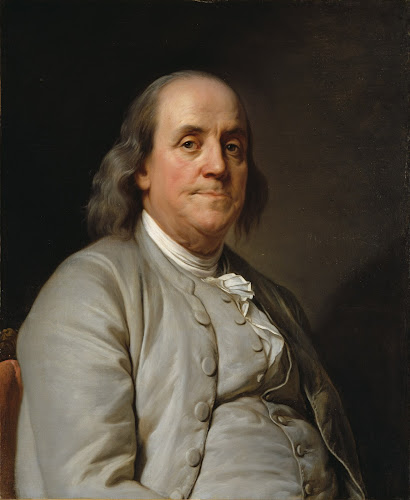

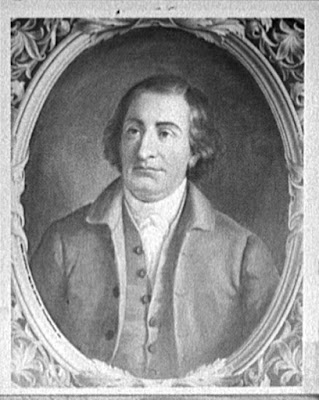
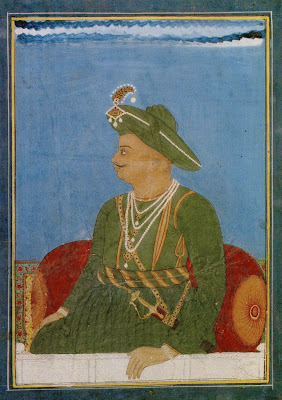
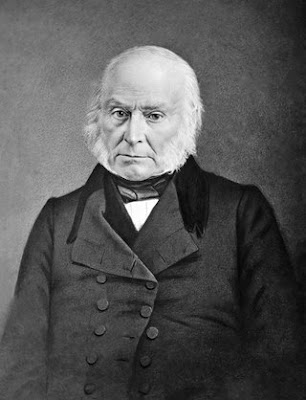
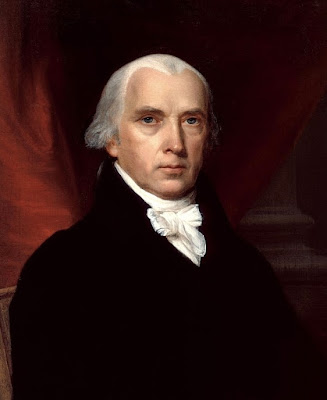

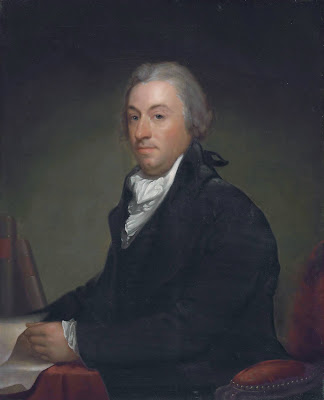
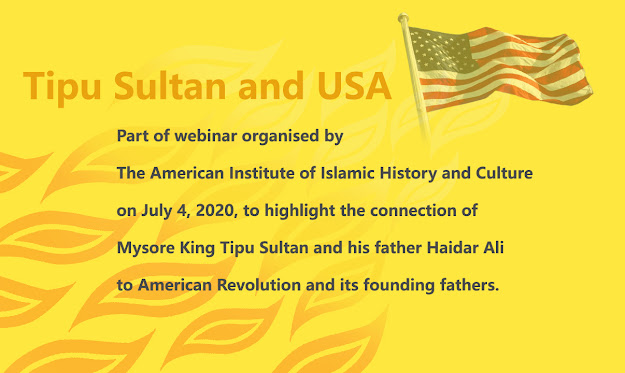


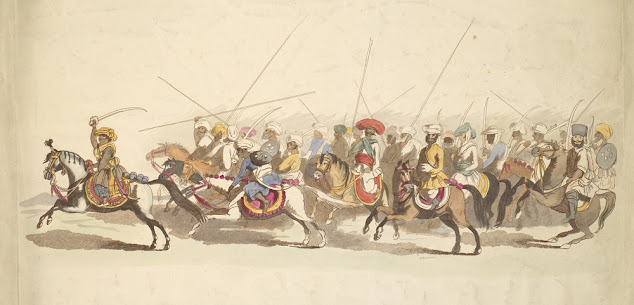

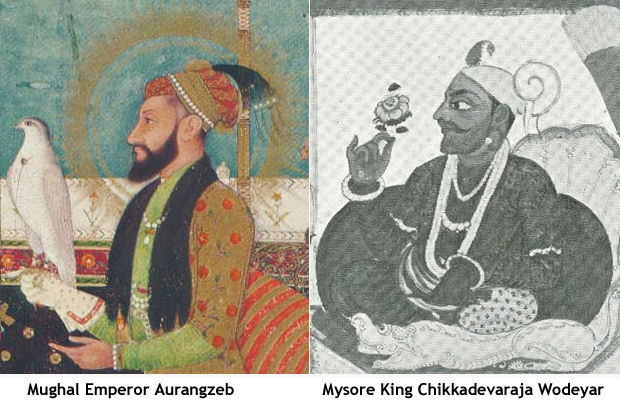
Good effort to present well-researched true history!
ReplyDeleteThanks to you for we know about tipu sultan by your blog
ReplyDeleteSuperb work.Very valuable information.Thanks for bringing such information in public
ReplyDeleteFascinating read. Kudos to you for taking the initiative , compliments !!
ReplyDelete